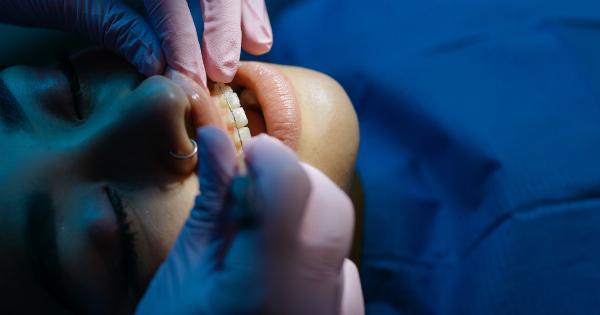The female pelvic region is a complex area of the body that plays a crucial role in reproduction and urinary function. It is comprised of various structures including the uterus, ovaries, fallopian tubes, vagina, bladder, and rectum.
Unfortunately, this region is also susceptible to a number of disorders that can cause significant discomfort and disrupt a woman’s quality of life. In this article, we will provide an overview of some of the most common disorders that affect the female pelvic region.
1. Endometriosis
Endometriosis is a condition in which the tissue that normally lines the uterus, called the endometrium, grows outside of the uterus. This can cause severe pelvic pain, particularly during menstruation.
Other symptoms may include heavy or irregular periods, pain during intercourse, and infertility. Treatment options include hormonal medications, pain relievers, and surgery.
2. Pelvic Organ Prolapse
Pelvic organ prolapse occurs when the muscles and tissues that support the pelvic organs become weakened or damaged, causing one or more of the organs to descend into the vaginal canal.
This can lead to a sensation of pressure or fullness in the pelvic region, as well as urinary incontinence and difficulty with bowel movements. Treatment options range from conservative measures such as pelvic floor exercises and pessaries to surgical repair.
3. Urinary Incontinence
Urinary incontinence refers to the involuntary leakage of urine. It can be caused by various factors, including weak pelvic floor muscles, nerve damage, and hormonal changes.
Common types of urinary incontinence include stress incontinence (leakage during physical activities or coughing/sneezing), urge incontinence (strong, sudden urge to urinate), and overflow incontinence (inability to fully empty the bladder). Treatment options include lifestyle modifications, pelvic floor exercises, medications, and in some cases, surgery.
4. Uterine Fibroids
Uterine fibroids are noncancerous growths that develop in or on the uterus. They can range in size from small to large and may cause symptoms such as heavy or prolonged menstrual bleeding, pelvic pain, and frequent urination.
Treatment options depend on the severity of symptoms and may include medication, noninvasive procedures, or surgery.
5. Ovarian Cysts
Ovarian cysts are fluid-filled sacs that develop on or within the ovaries. They are fairly common and often resolve on their own without causing any symptoms. However, larger cysts or those that cause pain or other complications may require treatment.
Options include watchful waiting, medication, or surgery.
6. Pelvic Inflammatory Disease (PID)
Pelvic inflammatory disease is an infection of the female reproductive organs, usually caused by sexually transmitted bacteria. It can result in pelvic pain, abnormal vaginal discharge, fever, and pain during intercourse.
If left untreated, PID can lead to serious complications such as infertility and chronic pelvic pain. Treatment typically involves antibiotics.
7. Vulvodynia
Vulvodynia refers to chronic pain or discomfort in the vulva, which is the external part of the female genitalia. It is often characterized by a burning or stinging sensation, and the exact cause is unknown.
Treatment options may include medications, physical therapy, and lifestyle modifications.
8. Interstitial Cystitis/Bladder Pain Syndrome
Interstitial cystitis, also known as bladder pain syndrome, is a chronic condition characterized by bladder pain, urinary frequency, and urgency.
The cause is unknown and there is no cure, but various treatment options are available to manage symptoms and improve quality of life. These may include dietary modifications, bladder retraining, medication, and bladder instillations.
9. Rectocele
A rectocele occurs when the rectum protrudes into the back wall of the vagina, causing a bulge or sensation of fullness. It can result in difficulty with bowel movements or the need to manually press on the vaginal area to evacuate stools.
Treatment options include pelvic floor exercises, lifestyle modifications, or surgery.
10. Pelvic Floor Muscle Dysfunction
Pelvic floor muscle dysfunction refers to a variety of conditions that involve abnormal tension or weakness of the muscles in the pelvic floor.
This can lead to symptoms such as pelvic pain, urinary and fecal incontinence, and difficulties with sexual function. Treatment options may include physical therapy, biofeedback, and medication.




























